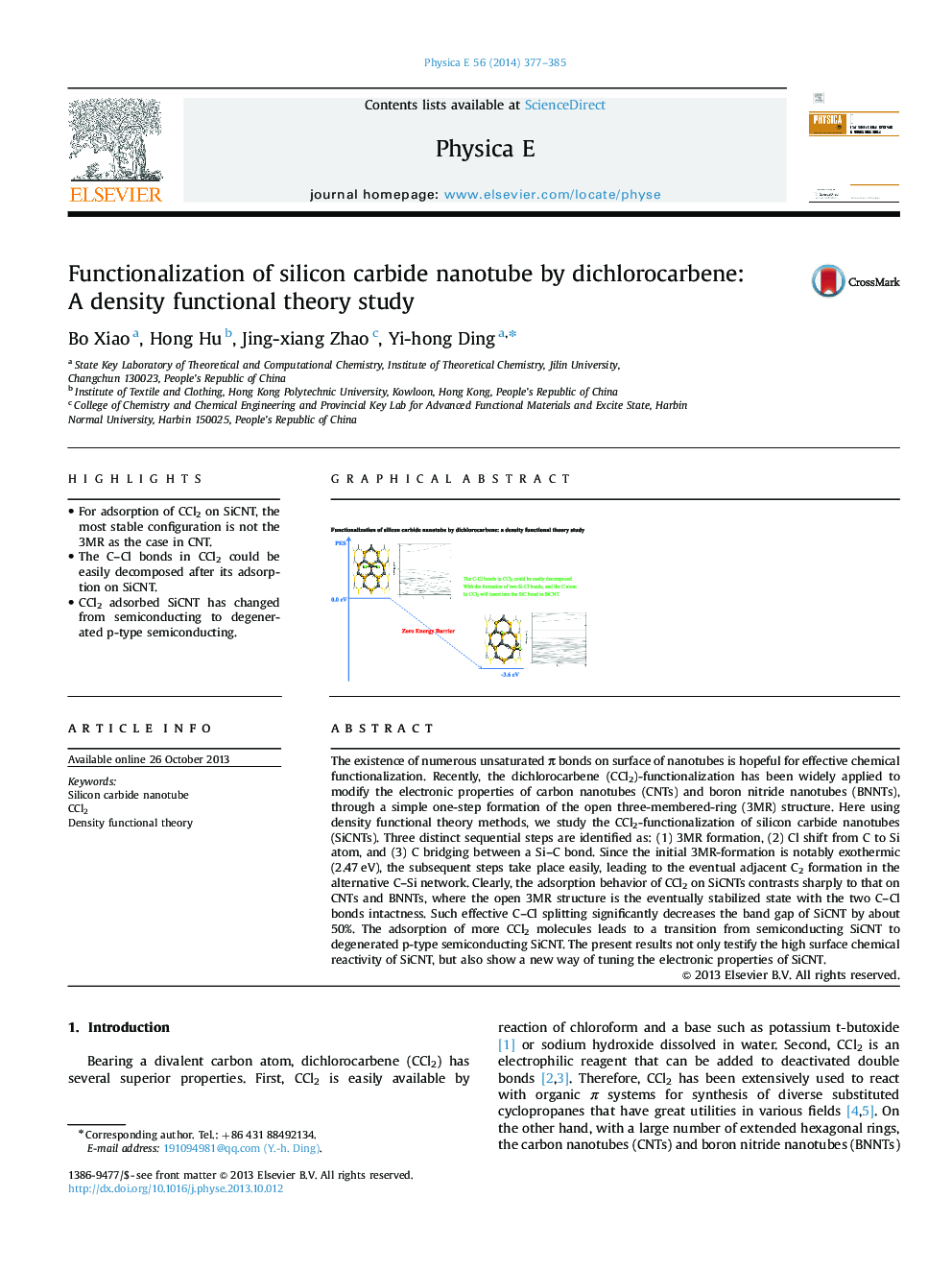| Article ID | Journal | Published Year | Pages | File Type |
|---|---|---|---|---|
| 1544612 | Physica E: Low-dimensional Systems and Nanostructures | 2014 | 9 Pages |
•For adsorption of CCl2 on SiCNT, the most stable configuration is not the 3MR as the case in CNT.•The C–Cl bonds in CCl2 could be easily decomposed after its adsorption on SiCNT.•CCl2 adsorbed SiCNT has changed from semiconducting to degenerated p-type semiconducting.
The existence of numerous unsaturated π bonds on surface of nanotubes is hopeful for effective chemical functionalization. Recently, the dichlorocarbene (CCl2)-functionalization has been widely applied to modify the electronic properties of carbon nanotubes (CNTs) and boron nitride nanotubes (BNNTs), through a simple one-step formation of the open three-membered-ring (3MR) structure. Here using density functional theory methods, we study the CCl2-functionalization of silicon carbide nanotubes (SiCNTs). Three distinct sequential steps are identified as: (1) 3MR formation, (2) Cl shift from C to Si atom, and (3) C bridging between a Si–C bond. Since the initial 3MR-formation is notably exothermic (2.47 eV), the subsequent steps take place easily, leading to the eventual adjacent C2 formation in the alternative C–Si network. Clearly, the adsorption behavior of CCl2 on SiCNTs contrasts sharply to that on CNTs and BNNTs, where the open 3MR structure is the eventually stabilized state with the two C–Cl bonds intactness. Such effective C–Cl splitting significantly decreases the band gap of SiCNT by about 50%. The adsorption of more CCl2 molecules leads to a transition from semiconducting SiCNT to degenerated p-type semiconducting SiCNT. The present results not only testify the high surface chemical reactivity of SiCNT, but also show a new way of tuning the electronic properties of SiCNT.
Graphical abstractFigure optionsDownload full-size imageDownload as PowerPoint slide
